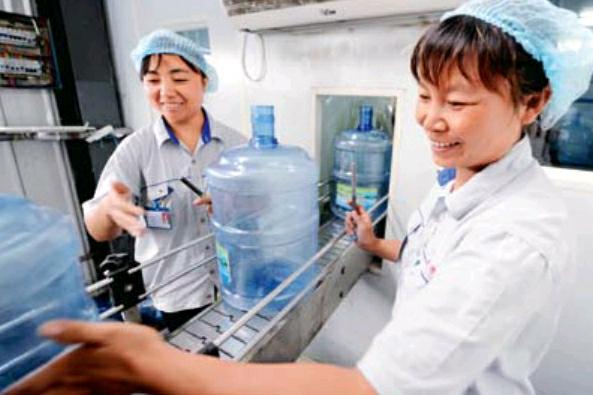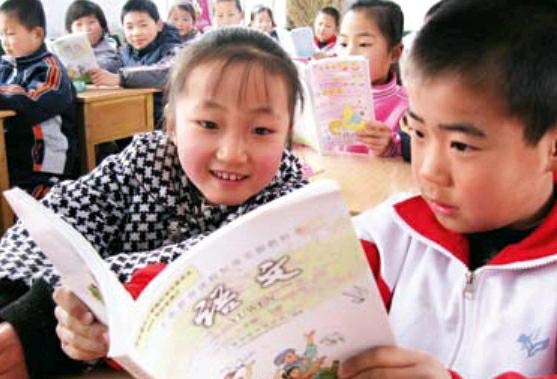China’s Contribution to Millennium Development Goals
2015-07-23byChenYejunandZh
by+Chen+Yejun+and+Zhang+Junrong
The Millennium Development Goals (MDGs) are eight international development targets stated in the United Nations Millennium Declaration adopted by all 189 United Nations member states at the Millennium Summit of the United Nations in September 2000. They are: eradicate extreme poverty and hunger, achieve universal primary education, promote gender equality, reduce child mortality, improve maternal health, combat HIV/AIDS, malaria, and other diseases, ensure environmental sustainability, and develop a global partnership for development.
These goals, which address the worlds most pressing devel- opmental challenges and support peoples aspirations for better lives, were designated to be achieved by 2015. How have these goals been implemented? What has China done to help them be achieved? China Pictorial has invited scholars to analyze and comment on the goals.
Similar Goals
The Millennium Development Goals Report launched by UN Secretary-General Ban Ki-moon in July 2014 examines the latest progress towards achieving the MDGs. It affirms that the MDGs have made a profound difference in peoples lives. Global poverty was cut in half five years ahead of the 2015 deadline. Over 90 percent of children in developing regions now enjoy access to primary education, and disparities between enrollment rates of boys and girls have narrowed. Remarkable gains have also been made in the fight against malaria and tuberculosis, along with improvements in all health sectors. Some specific goals, such as equal access to HIV/AIDS treatment opportunities and elimination of ozone-depleting substances, are also within reach. Still, greater efforts must be made to improve maternal health, popularize primary education and realize sustainable environmental development.
China combined its own development goals with the MDGs. By the end of 2013, it had reached its scheduled goal on poverty reduction ahead of time. The country has taken the lead in completing seven development goals: halving the hungry population, popularizing primary education, eliminating gender discrimination in primary and secondary education, reducing the mortality rate of children under the age of five, preventing and controlling malaria and tuberculosis, and providing safe drinking water and basic sanitation facilities. Moreover, the country has achieved massive progress in terms of promoting full employment and HIV/AIDS prevention and treatment.
At the same time, since most of Chinas poverty-stricken areas still depend on a traditional agricultural economy, the pressure on people in those areas has been exacerbated due to the reduction of both quality and quantity of natural resources. Today, poorly- educated human resources are incompatible with the needs of social and economic development. “To address these problems, the Chinese government has adopted a positive new industrialization development strategy, which places great emphasis on promoting urban-rural integration, coordinating development between economics and society, protecting the environment, sustaining exploration and utilization of natural resources, and establishing a people-first social security system in rural areas,” explains Professor Jian Xiaoying with College of Humanities and Development Studies at China Agricultural University.
Chinese Experience
According to Zhang Chun, vice director of the Center for West Asian & African Studies at the Shanghai Institute for International Studies, to achieve the MDGs, two major challenges remain. First, some regions will find difficulty completing the goals as scheduled. For example, 80 percent of poverty reduction has been contributed by China, while few countries in sub-Saharan Africa could hope to accomplish their goals. Second, for countries that have failed to accomplish their goals, the international community seems to lack enthusiasm to fulfill the aid pledges, which makes accomplishing the goals even more difficult. For example, although official developmental aid witnessed a major rise in 2013, the proportion allocated to sub-Saharan Africa actually dropped 4 percent. Thus, member states still need to work hard to reach MDGs.
“Chinas achievements and experience are important guarantees for the primary realization of MDGs,” opines Zhang Chun. Zhang reveals that China has taken an active role in initiating and participating in international development cooperation. The country has been promoting South-South cooperation and helping developing countries meet their MDGs. The most typical case is China-Africa cooperation, which provides a new concept for South-South cooperation and differs from the Western development mode. It has birthed a new method for balance that facilitates international development and stability.
“China-Africa and China-Latin America relations are based on equality and mutual benefits, completely free of the burdens of colonialism,” remarks Professor Pang Zhongying with the School of International Studies at Renmin University. “They are successful cases for South-South cooperation.” China has always conducted the “mutual development” practice, which has proven to be the most successful strategy for the relationship between China and the world. “Teach a man to fish and you feed him for a lifetime,” the saying goes, and along with development aid, China has boosted mutual development through trade and investment. With implementation of “Land and Maritime Silk Road” initiatives, China will become an even more important force to promote mutual development.

Li Xiaoyun, dean of the College of Humanities and Development Studies at China Agricultural University, remarks that Chinas experience with development and foreign aid is unique. The international community highly values this uniqueness which is a significant asset for global development and can be used as reference for developing countries. At the same time, China should initiate more active interaction with developing countries, conventional aid donors, and the international development system. Chinas international development policies should reach for a better position in international politics through talks and Chinas discourse power in global governance should be enhanced to influence the global developmental agenda.
“The core reason China can accomplish most of its MDGs ahead of time is not difficult to understand,” illustrates Jian Xiaoying. “The country benefits much from its industrialized development model, as well as compatible mechanisms and institutions, among which technological progress and capital have played a leading role.” Jian believes that if developing countries get stuck in the operational framework for agricultural economics and lack channels for the injection of foreign technologies and investments, they will not gain the necessary momentum, resources, and mechanisms to realize MDGs. In this sense, Chinas foreign aid and direct investment, which are carried out under concepts of an industry-based economy, will help Chinas practices be understood and accepted by more developing countries, and benefit more of the poor.